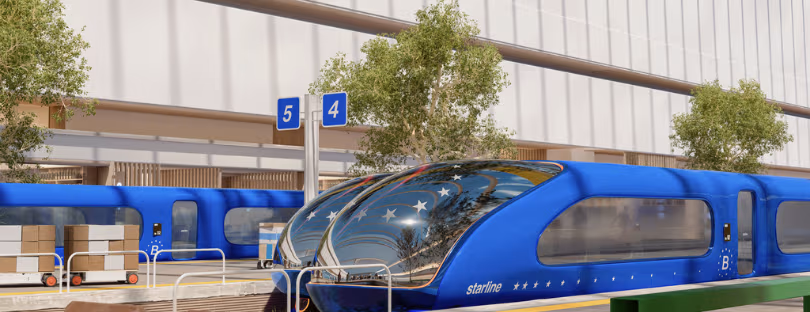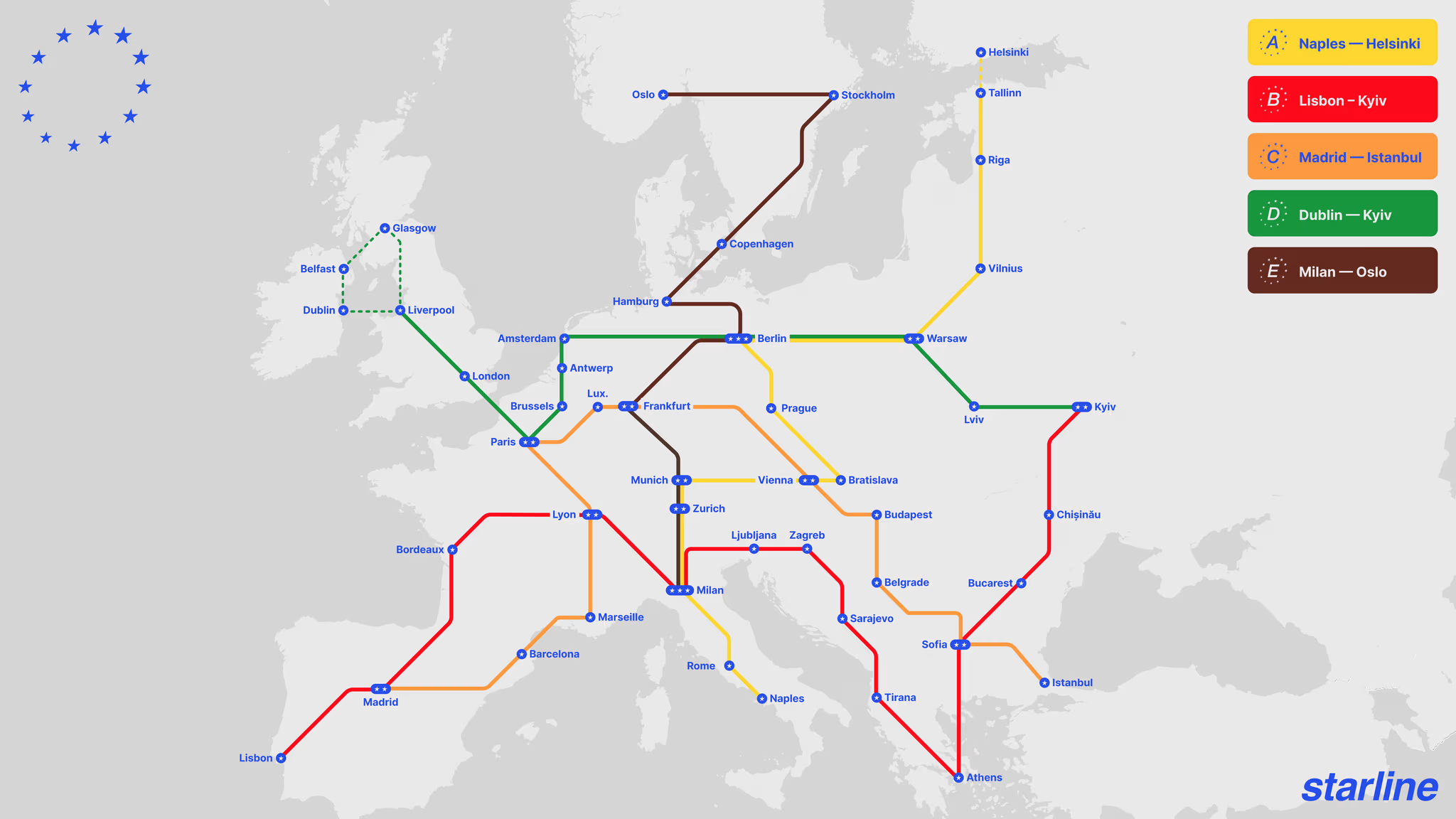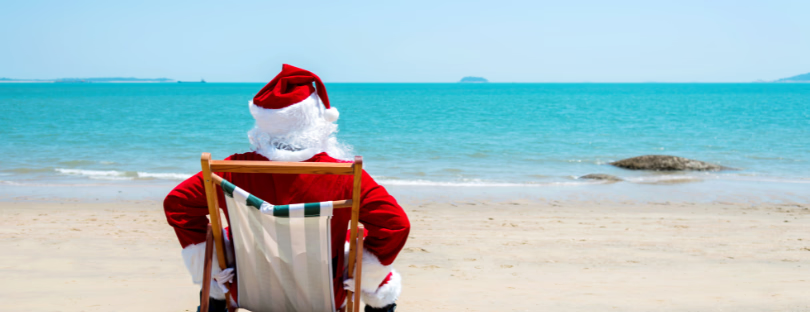
A Metro for Europe? Starline Plans to Connect 39 Cities by High-Speed Rail
Europe stands at a crossroads. Decades of political integration have not yet translated into seamless mobility. National borders still assert themselves in transport infrastructure. Air travel continues to dominate short-haul routes. Meanwhile, climate imperatives demand radical change.
Into this gap steps Starline, a bold blueprint from Danish think tank 21st Europe with design partner Bakken & Bæck, envisioning a high-speed rail network that stitches together the continent with metro-style simplicity and beauty.
A “Metro for Europe”
At the heart of the Starline vision is a simple yet radical idea: traveling between European capitals and major hubs should be as seamless as hopping on a city metro. Instead of juggling fragmented rail operators, inconsistent schedules, and complex ticketing systems, passengers would enjoy a unified, high-frequency network that makes cross-border journeys effortless.
The proposed network would link cities such as Paris, Berlin, Brussels, Amsterdam, Madrid, Milan, Vienna, and Copenhagen, alongside many regional hubs. Trains would run at regular intervals—potentially every 30 minutes on core routes—ensuring reliability and predictability for travelers.
A Climate-Friendly Alternative to Short-Haul Flights
The timing of Starline’s unveiling reflects a growing urgency in Europe’s transport debate. As the EU pushes for greener mobility and several countries introduce bans or restrictions on short-haul flights where rail alternatives exist, high-speed trains are increasingly seen as the backbone of a sustainable future.
Advocates argue that Starline could slash aviation emissions across the continent. By making rail travel fast, simple, and competitively priced, it could shift millions of passengers from planes to trains—helping Europe inch closer to its climate goals.
Beyond Borders and Bureaucracy
Currently, Europe’s rail landscape is a patchwork of national systems. While services like Eurostar, Thalys, and Renfe-SNCF cooperation show what’s possible, they remain limited in scope. Starline envisions tearing down these barriers with a single European framework for operations, standards, and ticketing.
The think tank suggests that EU-level coordination and investment would be crucial. Much like the creation of the Schengen zone transformed borderless travel, Starline would require political alignment to deliver a truly borderless rail experience.
Challenges on the Track
Turning this bold idea into reality will not be easy. Infrastructure upgrades across multiple countries, huge capital investment, and political negotiations all stand as obstacles. Europe’s diverse geography—from the Alps to the Pyrenees—adds engineering challenges, while competition from airlines and budget carriers could resist the shift.
Still, supporters say the payoff would be transformative: shorter travel times, enhanced connectivity, stronger regional economies, and a tangible symbol of European unity.
Challenges & Critical Questions
While Starline is inspiring, turning the vision into reality will be hard:
- Massive Investment Required: New stations, dedicated corridors, and energy infrastructure — cost will be high. Who pays, who bears risk?
- Political Alignment: Harmonizing safety, labour, and technical standards across many countries is nontrivial. Some nations may resist giving up national control.
- Geographic & Engineering Complexity: Alps, mountains, islands – terrain matters. Tunnels, bridges, and environmental impact assessments will be substantial.
- Competing Modes of Travel: Airlines, road transport, and existing rail operators have incumbency and vested interests. How to shift behaviour and policy to favour Starline?
- User Cost vs Accessibility: To attract mass ridership, fares must be affordable, but affordability must be balanced against recouping infrastructure and operating costs.
A Roadmap Forward
To move from blueprint to tracks, Starline proposes a phased approach:
- Pilot Routes & Demonstrations: Identify core axes (e.g. high traffic city-to-city corridors) to develop first.
- Institutional Setup: Form the European Rail Authority; create cross-border regulatory frameworks.
- Funding Packages: Tap EU infrastructure funds, bonds, and public/private partnerships with regional co-financing.
- Design & Branding Firsts: Finalise identity, prototype train designs, and stations.
- Scaling & Expansion: Extend the network outward, integrate logistics, refine digital systems, and expand station infrastructure.
A Glimpse of the Future
For now, Starline remains a vision—an inspiring blueprint rather than a construction plan. But it taps into a growing desire for a Europe that is more connected, sustainable, and user-friendly. If realized, Starline could redefine how Europeans experience their continent: boarding a train in Berlin and arriving in Barcelona, Paris, or Warsaw with the same ease as taking a metro across town.
As Europe faces the twin pressures of climate change and mobility demand, Starline may prove to be more than just a dream. It could be the roadmap to a continent where the train, not the plane, is the natural first choice for travel.










